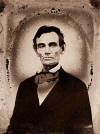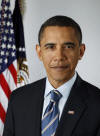

Portrait
Photography
You may have heard someone remark that a particular photographer “really captured” someone in a picture. They are referring in part to the image being a true physical likeness, but also reveals a significant, identifiable part of the subject’s character.
We all reveal our feelings and attitudes differently. Some of us may show our individual character with immediate transparency, while others may be more difficult to “read” at first.
The portrait photographer must become
proficient at studying people whom he or she doesn’t know in order to capture
their essence. This means watching for signals in a subject’s mannerism,
reactions, expressions, body language and then judging how best to
have the subject’s character revealed for the camera.
This takes skill and an understanding of human nature. It almost always requires engaging the subject in conversation, and quickly finding a suitable topic that will grab her or his interest and evoke a reaction.
Find common ground or a topic of particular interest to your subject, which can be a hobby, the latest news, a mutual acquaintance, or any number of topics.
Building a rapport with the subject is important, whether a three-year-old child or a ninety-five-year old statesman, because it makes the subject more at ease in your presence, and therefore more-relaxed and natural-looking for the lens.
You must take all possible steps to put a subject at ease in order for her or him to appear natural.
Posing
If you are in any doubt about whether you should be photographing someone, there is a simple rule.
Ask!!
Most people are flattered to be asked, and respond positively, but be ready to accept it if they refuse. It often helps to talk to people and show an interest in them and what they are doing before you ask to take their picture.
Of course there are times and places where you don't need to ask -
or where it would not be possible to do so. In general, at least in the
Finding inspiration
Many photographers have photographed people over the years, and the published work of photographers (and also of paintings, drawings and sculpture) is a great source of ideas.
You might find a single picture by one of the 'masters' of
photography that particularly excites or moves you, and aim to make pictures
that work in a similar way or evoke similar feelings. Don't worry that you are
copying someone else's work. That has always been an important part of the
training of artists, but especially in photography you will soon want to add
something of your own.
The study of the history of photography and the work of great photographers is arguably the most important thing you can do to help you growth as a photographer - so long as you make use of it by applying the insights you gain to your own photography.
Lighting
Natural daylight is probably the best possible light for
capturing the human personality.
The infinite variety of outdoor
lighting conditions allows unlimited opportunities for expression.
Excellent effects can also be produced simply by sitting near a
window.
Backgrounds
A
bad background can ruin a picture.
When framing your shot, pay attention
to what's behind your subject.
Use outdoor backgrounds to advantage,
such as colorful leaves, or broad expanses of color such as the
sky or distant scenery.

 sgrais
sgrais
Often you can shift your position or
your subject's slightly to greatly improve your composition. Sometimes,
however, you do not have much choice. You must seize the opportunity or you
will lose it. There's always Photoshop....
Sometimes your best picture is your first picture, and sometimes it’s the
last exposure you make. If the subject is in position, relatively-comfortable
and you are ready to shoot, there is usually no reason not to begin right away.
Often just getting started is enough to cause a subject to settle down if
they are uneasy or tense. You have to use your best judgment in every case. No
portrait session should be rushed, but there is no sense taking up your
subject’s time in idle chatter while you could be making exposures.
There is also no reason for your conversation to cease just because you have
started shooting. If the session seems to be going well, tell your subject; it
may provide added confidence that will show in their expression. Drawing a
subject out by having them talk while you are taking pictures will often result
in interesting and revealing expressions.
Subjects do not have to smile to make a good portrait. A serious or thoughtful expression can often be more revealing of character, and a better portrait.
Don't forget that most cameras take rectangular pictures, and often
when photographing people they will often - as the name suggests - fit better
into 'portrait' than 'landscape' format.
 Jane Evelyn Atwood Blind
Twins
Jane Evelyn Atwood Blind
Twins
Self Portraits
Animal Portraits